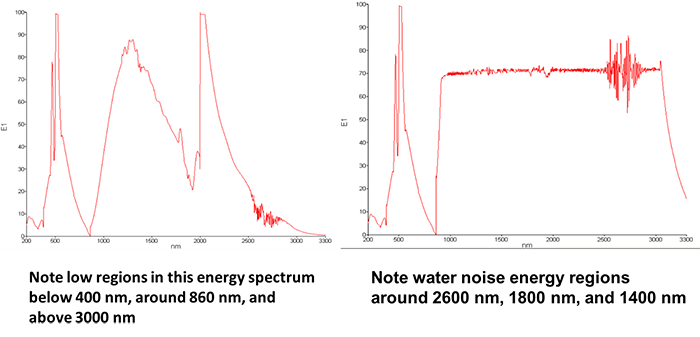How does noise change between fixed slit and servo slit mode?

As can be seen at left, the amount of radiant energy in a typical spectrophotometer varies greatly as a function of wavelength. The amount of noise in a UV/Vis/NIR spectrum is directly related to these energy levels. The ability to measure high absorbance values is critically dependent on the amount of noise close to the 0 %T axis. High absorbance measurements will be more difficult to obtain in low energy wavelength regions of the instrument. Key instrumental parameters associated with the control of spectrum noise are slit width, detector gain, and integration (response) time.
One common methodology for improving noise through the use of instrumental parameters is to servo the slit as a function of wavelength (at right). This technique has the advantage of maintaining a constant energy and noise level throughout the NIR wavelength range. The servo slit mode maintains 70% energy through almost the entire NIR region, with the exception of the long wavelength area above 2900 nm. The energy declines here because the slit is open to its maximum value of 20 nm. Once the slit has opened to this maximum size, the energy will start to decline.


